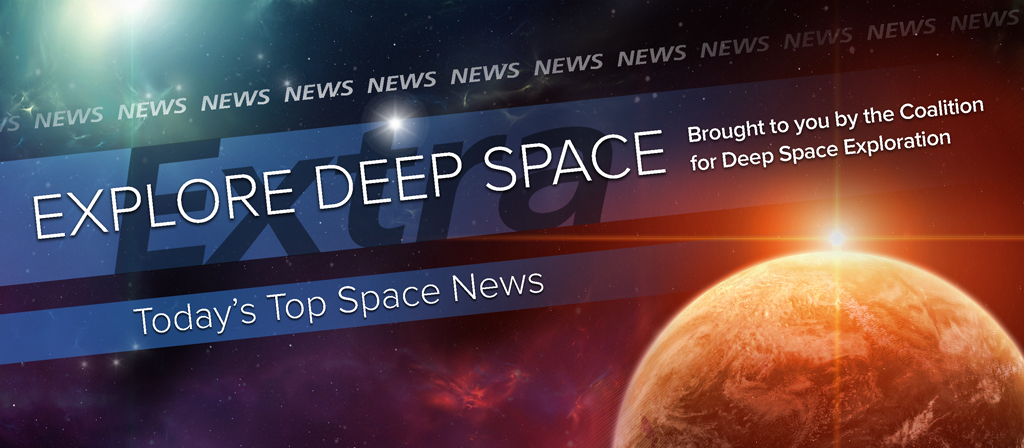In Today’s Deep Space Extra…The U.S. House Appropriations Committee approves a $19.5 billion spending measure for NASA during the fiscal year that starts Oct. 1, a $223 million increase.
Human Deep Space Exploration
House appropriators have big plans for NASA – UPDATE
Spacepolicyonline.com (5/24): The U.S. House Appropriations Committee finished its work on a 2017 Commerce-Justice-Science appropriations bill on Wednesday, which includes funding for NASA. The House measure raises NASA’s overall budget to $19.5 billion, an increase of $223 million. The bill includes $2 billion for work on the Space Launch System exploration rocket, including funds for an Exploration Upper Stage, and $1.35 billion for Orion, an $80 million increase. Appropriators erased funding for NASA’s proposed Asteroid Redirect Mission and instead directed the agency to plan for a return to the moon’s surface as part of its preparations for a human Mars mission in the 2030s. The measure supports orbiter and lander missions to Europa, the ice and ocean covered moon of Jupiter, and work on an interstellar propulsion system for a mission to Alpha Centauri, a small collection of the nearest stars, in 2069, the 100th anniversary of the Apollo 11 moon landing.
Could this ‘Mars Base Camp’ really send astronauts to the Red Planet in 2028?
Washington Post (5/24): Lockheed Martin’s strategic plan for a Mars Base Camp would place U.S. astronauts in orbit around the red planet as soon as 2028. The company unveiled its plan for an in space habitat for Mars bound explorers earlier this month.
Space Science
Alien life? Radiation may erase Mars, Europa fossils
Space.com (5/24): Radiation from galactic sources may have already erased fossilized evidence for past life in the surfaces of Mars and Europa, the ice and ocean covered moon of Jupiter. Both are considered top prospects for hosting past and possibly current day habitable environments.
Mystery solved? Supermassive black holes likely born big
Space.com (5/24): Why are some cosmic black holes categorized as “super massive” rather than big? A new study suggests the super massives were born that way. Findings gathered from the Hubble Space Telescope, Chandra X-ray Observatory and Spitzer space telescope await publication in the Monthly Notices of the Royal Astronomical Society.
NASA planetary stamps coming to a post office near you
Orlando Sentinel (5/24): The U.S. Postal Service will commemorate NASA planetary science missions with a new collection of brightly colored stamps. The artistic tribute should be available at local post offices by May 31.
Low Earth Orbit
On this date second American in orbit
Spaceflightnow.com (5/24): Tuesday marked the 54th anniversary of NASA Mercury astronaut Scott Carpenter’s three orbit mission around the Earth. Carpenter was the second from the U.S. to circle the Earth.
Commercial to Low Earth Orbit
FAA commercial space office wins budget increase in House
Space News (5/24): An amendment to a U.S. House appropriations measure approved Tuesday raised the proposed budget for the FAA’s Office of Commercial Spaceflight to $19.8 million for 2017, matching the amount sought by the agency in its budget request for next year and approved by Senate appropriators last month. The Office of Commercial Spaceflight issues launch licenses among its growing regulatory responsibilities and will use an overall raise of hire more staff.
Orbital planning new rocket to compete for U.S. military launches
Reuters (5/25): Orbital ATK unveiled plans Tuesday for a new rocket the company will use to compete for future U.S. commercial and military launches. The launch vehicle will be based on the solid rocket booster used by NASA’s space shuttle fleet with an upper stage produced by Blue Origin. Orbital Business Development Director John Steinmeyer outlined the plan Tuesday at the 2016 Space Congress conference in Cape Canaveral.

